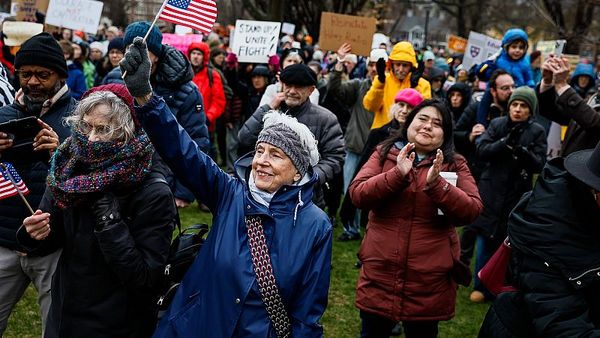COLUMBIA, S.C. — The HBO miniseries on the Murdaugh murders, “Low Country: The Murdaugh Dynasty,” was released on HBO Max Thursday, and it’s the most recent addition to the Southern Gothic saga that has gripped South Carolina.
The three episode miniseries features archival footage, reenactments and sweeping drone shots of marshes and the site of the murders, as well as gripping interviews with people intimately connected to the crimes, including attorneys, journalists and Lowcountry residents.
The first thing to know is that you shouldn’t expect the show to solve the murders. But each of the episodes, which clock in around 50 minutes apiece, are packed with all of the twists and swirling allegations that have defined the Murdaugh case.
The second thing to know is that, yes, HBO spells “Lowcountry” as two words in its title, but the misspelling isn’t a northern faux pas. It’s a play on words as the documentary lays out the bad behavior of the Murdaughs as they abused their out-sized influence in their corner of the state for generations.
Here are a few takeaways:
1. The boat crash
Before the murders of Maggie and Paul Murdaugh in June 2021, a boat, allegedly driven by Paul, collided with the Parris Island Bridge the night of Feb. 24, 2019.
Mallory Beach, 19, was killed in the crash, and the ensuing news stories exposed the first cracks in the foundation of the empire the Murdaugh family had built for themselves in Hampton County.
The first episode of “Low Country” focuses on this event and the aftermath of the crash.
HBO has extensive interviews with Beach’s boyfriend, Anthony Cook, and his parents. They’ve also accumulated a wealth of surveillance, law enforcement and news footage from the incident and its aftermath.
Among the most chilling scenes come from emergency room surveillance footage, which shows three generations of Murdaughs wandering the hospital’s halls and going into rooms in the presence of law enforcement to allegedly pressure Paul’s friends into silence. It’s a brief glimpse of a family that had been untouchable for decades.
2. Who was Paul?
While the documentary doesn’t shed much light on Murdaugh or Maggie, it offers some insights into Paul — the youngest son whose alleged actions on the night of 2019 were the beginning of the end of the family.
Paul was a lot of fun, at least until he started drinking, and that’s when “Timmy” came out, people close to him describe on the series.
According to several interviews featured in “Low Country,” when he drank heavily, Paul seemed to become a different person, a character that his friends called “Timmy.” They always knew “Timmy” was out to play when Paul started spreading his fingers wide apart and keeping them straight as if he could no longer close them, they said. He also got mean, according to friends.
The night of the crash, video from a dock shows Paul arguing with his girlfriend, and the documentary shows him with his hands spread and stiff.
3. The death of Stephen Smith
“Low Country” devotes much of its second episode to untangling the mysterious death of Stephen Smith, a young Hampton man who was found dead in the road in 2015, and whether the Murdaughs were involved.
While local law enforcement ruled it a hit and run, his family and troopers with the state Highway Patrol say they aren’t sure.
Through extensive interviews with family members, as well as two members of the South Carolina Highway Patrol, the filmmakers highlight what they say are many abnormalities in Smith’s death. His injuries weren’t consistent with a car crash, there was no debris at the scene and his wallet was still in his car even though he was supposedly walking to get gas in the middle of the night.
Questions are raised about whether Smith and Buster Murdaugh, the oldest son, knew each other, and what motivation there could have been for the family to be involved in the death.
4. Alex’s financial crimes
The final episode delves into the slow unraveling of Murdaugh’s financial crimes, starting with the allegation that Murdaugh looted the settlement intended for the children of his family’s housekeeper, Gloria Satterfield, who died after a fall in their home.
The documentary explores allegations that Murdaugh brought on his close friend Cory Fleming to represent Satterfield’s sons, sued his own insurance, and then had the funds deposited into a bank account that appeared to belong to a legitimate settlement company.
But the theft from Satterfield is just the beginning.
Attorney and state Rep. Justin Bamberg, D-Bamberg, outlines several cases where Murdaugh stole from his clients, often working-class Black men and women who had been involved in serious accidents.
All told, Bamberg estimates that Murdaugh stole as much as $10 million.
5. What happened at Moselle?
More than a year after the June 7, 2021, shooting deaths of Maggie and Paul, Murdaugh was charged in their murders at the family’s hunting lodge, Moselle, in Colleton County.
He is set for trial Jan. 23 through Feb. 10.
“Low Country” presents a recreation of a timeline offered by one of Murdaugh’s defense attorneys, Jim Griffin.
The attorney says that Murdaugh, Paul and Maggie had dinner at the Moselle the night of the murders. After dinner, Paul and Maggie left the house while Murdaugh napped, according to the documentary.
At 9 p.m., Murdaugh woke up and went to visit his mother who was suffering from dementia and supposedly was on the phone while driving. But his mother’s dementia means she can’t testify, and one interviewee points out that no one has come forward to offer another alibi.
When Murdaugh returned to Mosselle approximately an hour later, Griffin says that Murdaugh found Maggie and Paul shot to death near the dog kennels. Paul was almost decapitated by a shotgun blast; Maggie was shot with an AR-15-style rifle and then shot again while on the ground.
A document filed in Colleton County Court Tuesday makes it clear that the state intends to prove that Murdaugh committed the murders between 8:30 p.m. and 10:06 p.m. on June 7, 2021.
6. The defense case
In the HBO series, Griffin, one of Murdaugh’s defense attorneys, gives a preview of some of the defense team’s likely lines of attack.
The defense attorney describes Maggie and Murdaugh’s relationship as “loving,” and suggests that a vigilante seeking revenge for Mallory Beach could have killed Paul and Maggie.
Griffin also takes aim at the state’s evidence that aerosolized blood was found on Murdaugh’s shirt, which would indicate that he was at least present at the shootings. But the attorney says that this kind of blood spatter analysis is “junk science,” arguing that while it can be effective on hard surface it doesn’t apply to fabrics.
Griffin also defends the theory that Paul wasn’t driving the boat that killed Beach.
In a revealing moment, when asked if it was a conflict of interest to represent Murdaugh given that he’d previously represented Paul, Griffin replies that it would only be a conflict if he remotely believed that Murdaugh was guilty.
———







